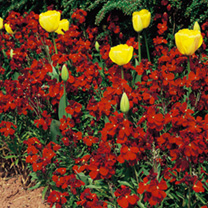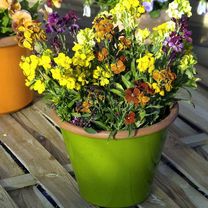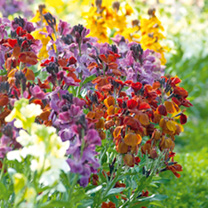Last Updated on January 12, 2024 by the Dobies Horticultural Team
Wallflowers are both easy to grow and hardy. These cottage garden biennial favourites have deservedly graced our gardens for many years. Not only do the jewel colours brighten a dull day but the evening perfume is an added delight.

Contrary to popular belief not all wallflowers want to be alone. They prefer to be planted in drifts of single or mixed colours, possibly combined with tulips and other tallish bulbs. Lupins, peonies, poppies and pinks also work well planted with wallflowers.
Wallflowers are members of the brassica family and so vulnerable to the same pests and diseases, including club foot. To avoid this, follow the rules of crop rotation and never plant wallflowers where you have previously grown cabbages.
Wallflowers can easily be grown from seed and this will give you a wide choice of colour and height. Sow the seeds in June/July and plant out in September. Being fully hardy down to about -15 degrees the plants will establish and bloom from March to the end of May.

Alternatively, buy your wallflowers as bare root plants. I remember when plants were sold in greengrocer shops, standing in a bucket of dirty water and then wrapped in old newspaper for carrying home. Things have moved on since. You can now order your bare root wallflower plants online and we’ll deliver to your door. Bare root plants are stronger than seed grown and will flower earlier in the year.
Our bare root plants are freshly dug from the ground. On receipt they may look a little sad but once planted will soon perk up. Don’t worry about a few yellow leaves, these will quickly be replaced. Just soak the roots in water for about an hour and then plant immediately. Choose a sunny, well drained spot in alkaline soil and then just wait for spring and the vivid splash of colour.

